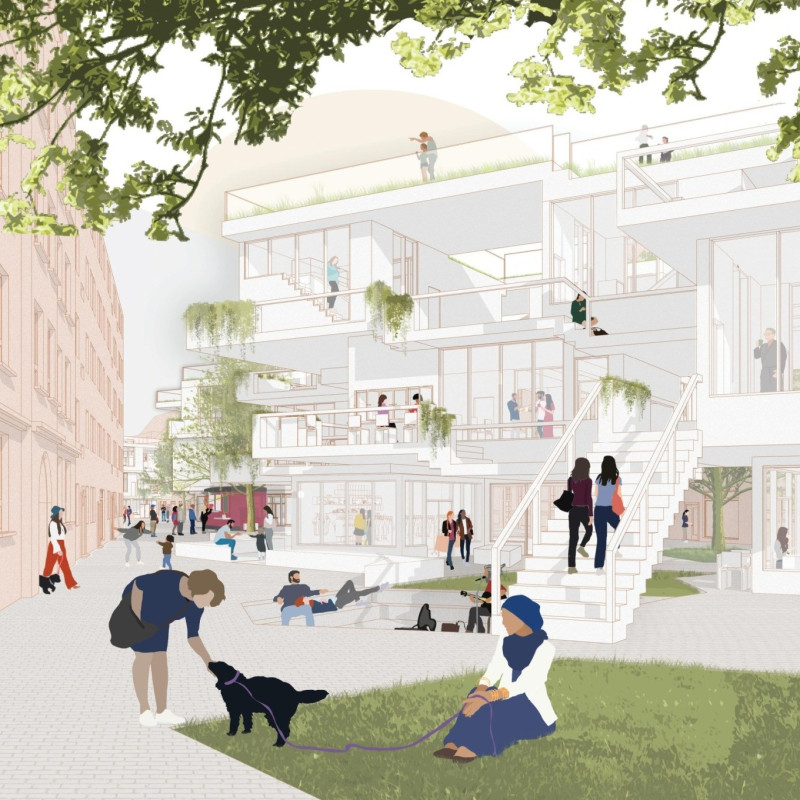5 key facts about this project
"TAKE THE STREETS!" addresses urban challenges in Berlin, focusing on the balance between private vehicle traffic and the need for affordable housing. Located in the city's Inner Ring, the project aims to change a significant portion of street space into areas that prioritize pedestrians. By reducing reliance on cars, this approach seeks to improve air quality while providing a practical solution to the housing shortfall.
Urban Transformation
The project suggests closing certain streets to private vehicles, turning them into public spaces. This shift allows for the potential of freeing up substantial urban areas, which could accommodate around 100,000 new residential units. With this redesign, the plan directly responds to the pressing issue of housing shortages and creates opportunities for residential, commercial, and shared spaces.
Integration of Co-Living Spaces
A key focus is the development of micro-unit co-living spaces that cater to various income levels. These small living units are designed to encourage community bonds while providing affordable housing options. The addition of commercial spaces at street level also supports a mixed-use environment, enhancing the overall function and liveliness of the area.
Human-Centric Design
The design emphasizes easy movement for pedestrians. It allows inhabitants to navigate through new public spaces without obstacles. Prioritizing walking and cycling, the plan includes green areas and low-speed zones. By raising residential units above street level, the design expands public space, improves accessibility, and changes how private living interacts with communal areas.
Innovative Use of Existing Space
Significantly, the approach does not require new land. Existing public roads are repurposed to meet the needs of the community. This shows that urban landscapes can grow and adapt without extending their physical boundaries. By rethinking street use, "TAKE THE STREETS!" offers a model for sustainable living that emphasizes community engagement. The integration of open spaces and natural elements enhances the urban experience while allowing streets to serve both functional and social purposes.



















































